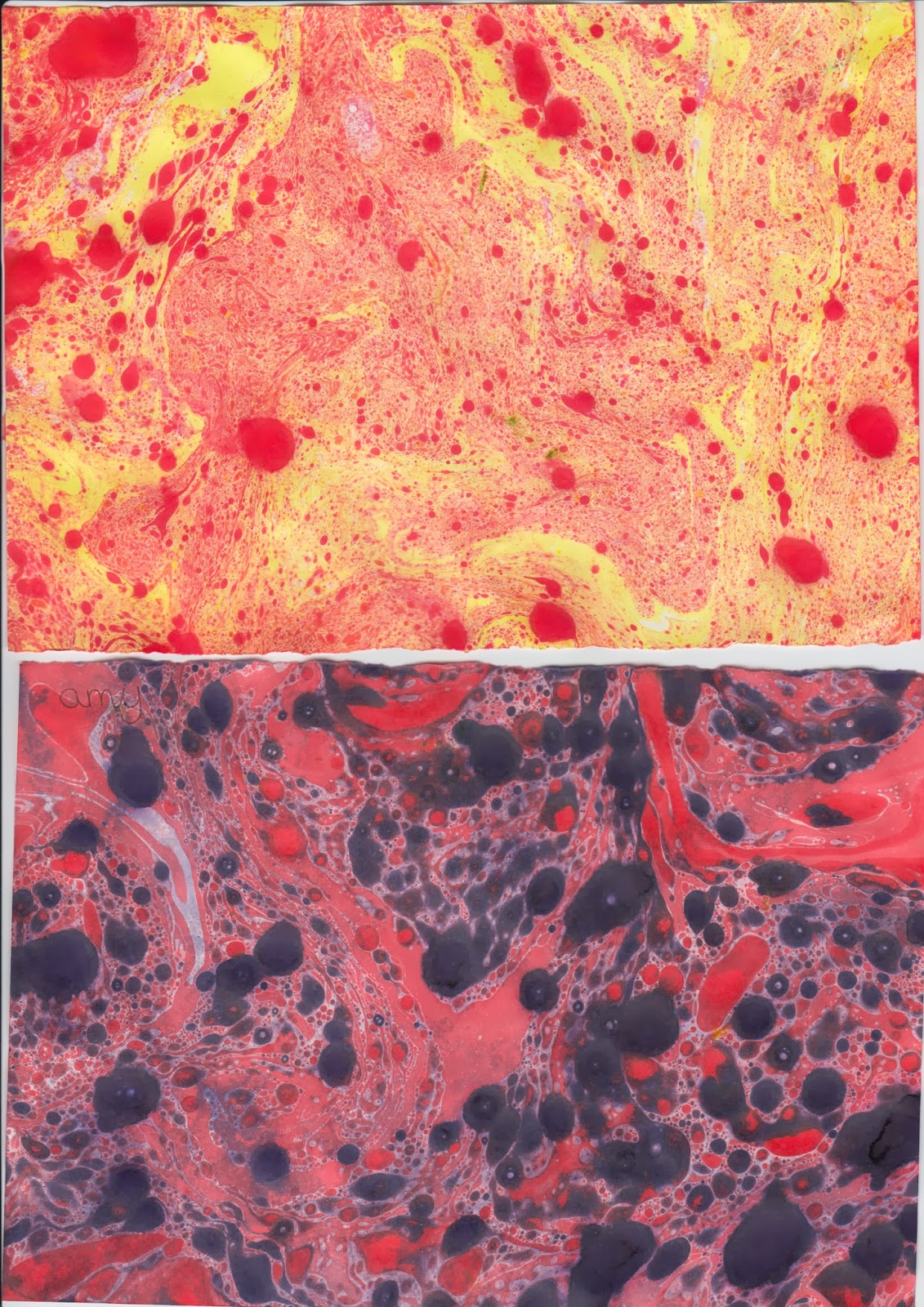In our lesson on Tuesday, we learnt different ways of incorporating print-based techniques into our children's books. The first we used, in a hands on approach, was marbling.
Paper Marbling
Paper marbling is a long-used technique, less popular in recent decades but used extensively for endpapers in books and stationery. Another use has been for calligraphy paper, and the process is universal.
In order to create the pattern, water is placed in a tray. Then, coloured marbling ink is carefully and illiberally applied to the water, and stirred or blown. Next one or more different coloured inks are added, which sit on top of the base colour and do not, like oil and water, mix. This gives the maker the ability to mix the inks into interesting patterns. We used straws to stir the ink, but popular methods include blowing through a straw, using split bamboo or human hair in order to create the desired effect.
Although the patterns I created weren't always aesthetically pleasing due to largely the colours that I chose to mix together (for example the reds and blues and yellows) eventually became a murky brown colour such as the top middle.
Monoprinting and Scraffito
Monoprinting is a versatile image creation method which can be done negatively or positively, depending on the artist's desire for the final product. It is also up to the artist to use oil or waterbased inks, which will affect the results.
The method is most commonly achieved by rolling the ink onto a printing plate and then do one of two things:
One - for positive images, place the paper directly onto the plate and draw on the back of the paper. The pressure will create the dark blue images seen below.
Two - for negative images, carefully wipe the ink off in the desired pattern before placing the paper on top of the printing plate and apply pressure evenly all over to get the ink onto the paper, revealing the negative space pattern you designed.
My first attempt, Manta Ray and Luna, was a bit sketchy because I was very hesitant to place too much pressure on the paper. This resulted in having a large white section. The second, below, became opposite; I had become a bit more confident and applied a bit too much pressure so the panda and the frog were obscured slightly by the excess ink transferred.
Scraffito
Scraffito is created by layering two different colour waxes, in this case crayons. The bottom layer should be the lighter colour, and the method consists of scratching a pattern into the top layer to reveal the brighter colour beneath. It was an interesting method but not one that I would repeat as although it was artistic and interesting to experiment with, it does not look aesthetically pleasing, especially to a child.
Evaluation: All of the methods experimented with here were fascinating, however none of them convey the right themes of light and vibrancy that I want for my children's book. They are too dark and intense for the easy-going theme of the book and so I will not be using these methods.





No comments:
Post a Comment